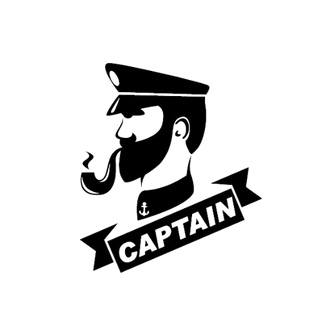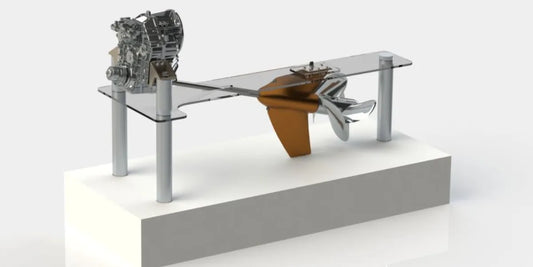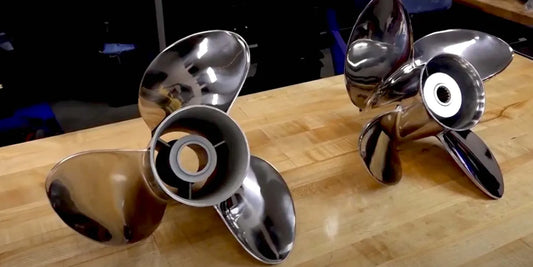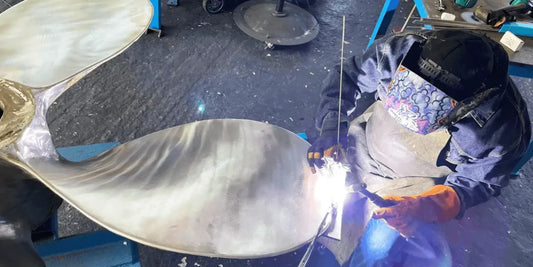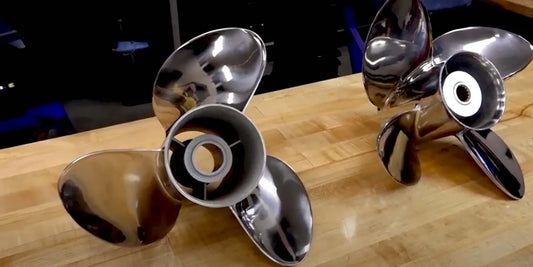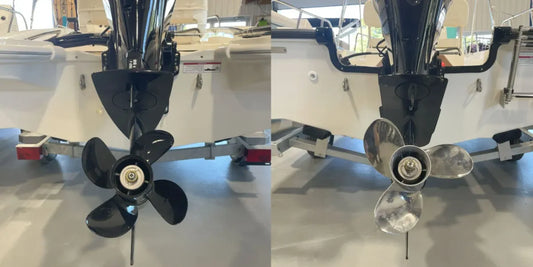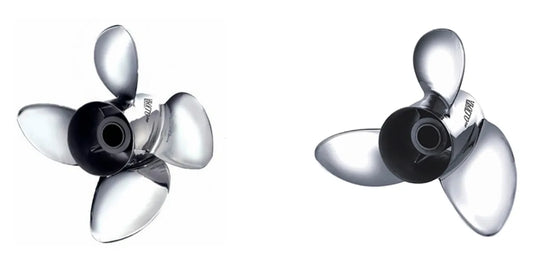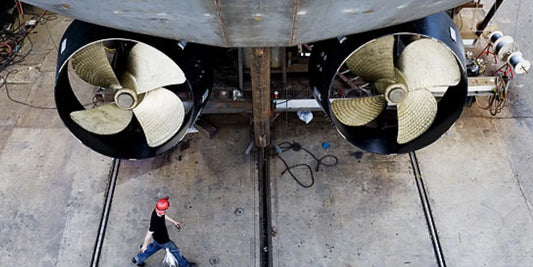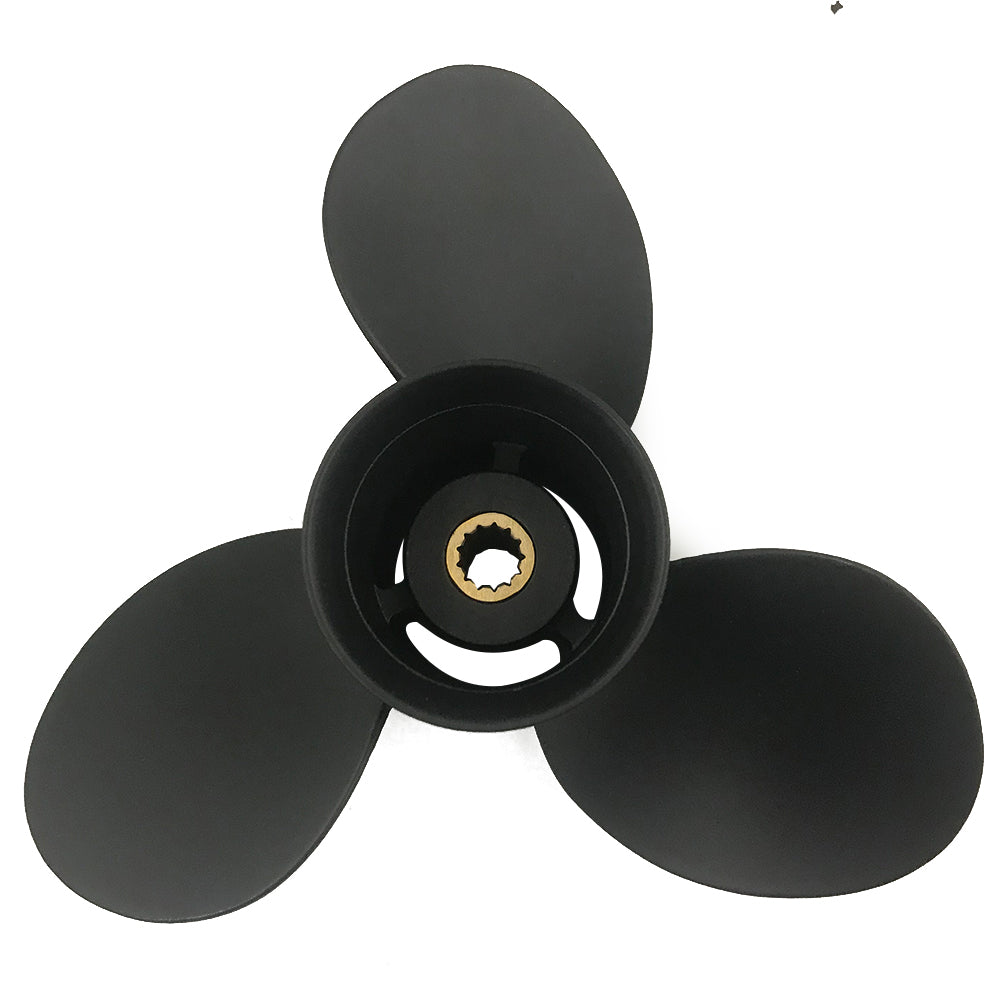、Depending on your choices, the vessel that fits your adventure style perfectly goes one of two ways: choosing between jet boats or prop-driven boats. These technologies serve different benefits and are used accordingly for recreation, performance, and handling. Today, we'll share all the key differences and specifications any boater should know while expounding on how each propulsion system fares in speed, maneuvering, maintenance, and suitability for various water conditions. Thus, whether the reader is a seasoned captain or a first-time buyer, this guide presents some worthwhile considerations to make an informed decision about choosing a boat that will suit the reader's lifestyle.
Introduction to Jet Boats and Propeller Boats

What Is a Jet Boat?
A jet boat is a watercraft whose engine is attached to a jet propulsion system. While regular boats have exposed external propellers, a jet boat's intake draws water into the system, compressing it and ejecting it at a high rate through the nozzle at the stern. The thrust generated by this propulsion is strong enough to propel the boat forward with relative agility and speed. Because of their capability to work in shallow waters without the risk of an exposed propeller being hit, jet boats have gained tremendous popularity. They are ideal for navigating rivers, lakes, and coastal areas with fluctuating water levels or harbors below.
Being highly maneuverable is another of jet boat propulsion's few significant advantages. Jet propulsion equips the boat with finely tuned control, supporting monstrously sharp turns and almost immediate stops. This ability makes jet boats highly sought after for recreational activities like water skiing, wakeboarding, and pleasure rides. Also, since the jet propulsion mechanism significantly reduces injuries from an exposed propeller, jet boats become a relatively safer kind to use around families or with swimmers. However, jet propulsion works best at speed; sometimes, slow means the opposite of precise.
Cleaning debris is another important routine of jet boat maintenance. Sand, weeds can clog the system, or even other annoying things affecting its working capacity. Jet boats, in general, are less prone to mechanical breakdowns than their propeller counterparts, thanks to their compactness and sleek design. Jet boats embody an edgy and more active option that ensures versatility, safety, and performance, all big pluses on any on-water fun.
What Is a Propeller Boat?
An engine-controlled watercraft generates pressure through one or more propellers. The propeller is mounted below the hull; it is connected to the engine with a shaft but spins at a very high speed to bring the water backward into the boat's forward motion. Propeller boats are very versatile and come in all sizes, from small recreational vessels to large commercial ships. They are known for their efficiency at high speeds and smooth operation in deep and calm waters.
These allow them to be highly maneuverable and are perfect for water sports, fishing, or transport. Damage and entanglement occur when the environment gets awkward, including shallow waters rich in obstructing debris. Due to advancements in marine engineering, better designs and development combos for protected propellers and variable pitch propellers came to life for performance and durability improvements. The marine services industry is still influenced by propeller boats for efficiency, reliability, and capability under different water conditions.
An Overview of Jet Drive and Propeller Drive Systems
Jet and propeller drive systems represent two ways of pushing marine vessels in response to distinct applications, advantages, and disadvantages.
Jet drive systems draw in water into an intake and expel it out of the nozzle at high velocity to generate thrust. Appreciate not having moving parts exposed under the vessel, a jet system is very fit for shallow water operations and environments flooded with underwater obstructions. Furthermore, jet drives have extraordinary handling, enabling ships to spin, reverse, or stop easily. This propulsion system attracts jet boats, personal watercraft, rescue craft, and high-speed ferries. However, at cruising speeds, the jet drive usually has less fuel efficiency than propeller systems and may be limited in its performance in the open seas.
A propeller drive system, conversely, generates thrust by spinning a blade. The least disturbed and ageless design will, from a fuel economy and speed consistency point of view, definitely reign supreme in deep water, particularly on long-distance applications. On top of that, the propeller drive system is flexible and suitable for an extensive range of vessels, from fishing boats to enormous cargo vessels. By way of present-day improvement, such as a variable pitch propeller and a propeller guard, higher performance for all-around service remains achievable. However, their vulnerabilities to damage from debris and shallow water hazards will perhaps be a little greater.
By understanding jet and propeller water systems, marine engineers and operators are offered alternatives concerning what best serves an intended purpose, thereby optimising vessel performance and safety in disparate environments. Both systems are undergoing simultaneous advancement, aided by research in materials, design, and sustainability, and are, therefore, able to keep pace with the increasing demand of modern watercraft propulsion.
Comparison of Performance: Jet vs Propeller

Speed and Acceleration
A striking difference arises concerning speed and acceleration between the jet and traditional propeller drive systems. Jet drives provide quick acceleration since thrust builds up instantly as water is expelled quickly through a nozzle. This quick thrust application makes jet propulsion favorable in situations requiring fast maneuvering or a quick start, such as rescue operations or negotiating sharp turns on fast-flowing rivers. On the contrary, propeller systems often attain much higher top speeds in open waters as they effectively convert the engine power into forward motion over a long distance.
The price paid, however, concerns how each system fares in specific situations. While jet drives offer consistent power in shallow waters or when debris obstructs safe passage, a propeller system is often subjected to tremendous hindrance and is able to deliver its best in deeper waters. Each system has a peculiar capacity, and how far it goes towards serving a vessel's purpose depends on the vessel's design and operational environment.
Handling and Maneuverability
In judging any propulsion system, handling and maneuverability are paramount considerations whose levels impact vessel performance and safety under varied conditions. Jet drives offer extraordinary maneuverability with responsiveness and control, especially in confined spaces or rapid directional changes. This is done by redirecting the water jet generated therefrom to permit sharp turns and fine adjustments. These are the "quick handle" resources ideal for the rescue scenario and the sports realm.
Conversely, in the wild, off steady speed, the old water systems prefer to stand firm and offer more predictable steering. They may demand a larger turning circle and are less responsive than jet drives. However, improved rudder designs and dynamic thrust controls have significantly increased their maneuverability in the past few years.
Ultimately, the jet versus propeller-handling and maneuverability debate will be decided by operational priorities. Jets servicing the shoreline with abundant sites will prefer jet drives, whereas systems intended to carry them deep in open water will use general propellers.
Fuel Efficiency and Range
Fuel efficiency has to be considered when looking at the questions of running costs and environmental erosion brought about by marine propulsion systems. While serving efficiently at higher speeds and under certain conditions, Jet drives consume more fuel than those operating in a propeller system when cruising at relatively low speeds or carrying heavy loads. This is basically because at a diminished velocity, there is a low conversion of the engine power to thrust. On the other hand, propeller-driven systems are regarded as those that give a graceful, steady fuel consumption over a broader range of speeds, and hence seem to be the choice for those vessel setups that require a long range and are enduring.
Hybrid drive systems and energy recovery methods are introduced in the propulsion world, thus offering solutions to improve fuel efficiency. Propeller systems tend to benefit more from these designs due to their simple mechanical structures, which allow an easy marriage between energy-saving concepts such as optimized propeller blade shapes and variable pitch controls. On the other hand, newer generations of jet drives are starting to incorporate lightweight materials and improved hydraulic designs to address older issues.
Then, the opposite situation arises regarding the range of operations. Most vessels operating on propellers will go further on a single fuel load, especially when very efficient hull designs that minimize drag are fitted. Jet drives, by way of contrast, performing excellently in tactical applications that demand bursts of speed or require fine-tuned maneuverability, would require frequent refueling, especially on long-haul operations. While choosing the system, an analysis must be given to both the demand for speed and operational budget, including environmental concerns.
Advantages of Jet Boats

Shallow Water Navigation
Due to their innovative propulsion systems, jet boats are ideally suited for shallow water environments. Destroying this rectangular design comes with a hull, and traditionally, propeller-driven boats had external mechanical parts protruding below the hull; jet boats have an internally designed propulsion system powered by drawing in water and expelling it at high velocity, creating thrust. Thus, it can never suffer propeller damage from underwater elements, and it also facilitates safe and efficient passage across areas with less water clearance.
Moreover, the present-day design of jet boats combines superior materials and hydrodynamic hull shapes to guarantee the best possible performance even when presented with the harshest aquatic terrains. This capability is pivotal when operations such as river rescue, the eco-tourism industry in fragile ecosystems, and recreational pursuits in places with varying water levels are posed as needs-based. With parental disturbance and low maintenance, jet boats rely upon shallow water formulas, which are practical yet sustainable.
Propellers Putting in Less Danger
One particular advantage of jet boats is that they almost entirely remove any chance of the propeller being damaged underwater in shallow or debris-laden waterways. Whereas an outboard motor generates thrust from an external propeller, the jet boat uses an internal jet propulsion system. No exposed blades are underneath a jet boat, making it considerably safer to travel through areas filled with obstacles, rocks, or tree branches beneath the water's surface. That absence of a vulnerable propeller lowers the chances of damage occurring but also decreases the need for constant repair and replacement, saving operators considerable amounts of money in the long term.
The ingenious jet propulsion method works by water being drawn in through an intake into the boat and then expelled at great pressure from within, thereby creating thrust. Because this system is enclosed within the hull, a far higher level of protection is afforded against potential harm from submerged hazards. These design benefits increase the vessel's durability and ensure the reliability of its operations in even the harshest environments. Improved jet boat designs in recent years are only adding to their ruggedness and self-reliance, making them an increasingly popular option in watercraft markets for emergency services, fishing, exploration, and recreational boating in uncertain water environments.
In sectors where industries demand a consistent and efficient performance on water, reducing risk from the jet boat's chances of propeller damage, and hence operator benefit, becomes a sales factor. The assurance of the ship to her owners contributes to a more sustainable value. By combining a sharp focus on safety, durability, and cost-effectiveness, jet boats are changing the face of shallow water navigation and equipping their operators with the confidence to tackle the challenging environment.
Greater Stability in Rough Waters
With their versatility and a distinctively different type of propulsion system, jet boats have gained favour among water sportsmen. Unlike other surface vessels with exposed propellers, Jet boats utilize an impeller housed inside the hull to generate thrust, thus removing most risks related to underwater obstacles or debris. This design makes the boat safer for wakeboarding, tubing, and waterskiing, where the tow party is frequently very close to the boat. Also, the absence of a propeller at the back offers a smoother flow of water, enhancing safety for swimmers and those about to participate in water sports.
The speed at which jet boats deliver is another blessing for jet boats; the excellent maneuverability and rapid acceleration offer thrills on many occasions. The tremendous response of the throttle, coupled with the precise control jet boats offer, lets drivers create wakes of just the right size and shape to meet the preferences of the athletes and riders, for wake-surfers, that adjustable wake size can present the best level to either learn tricks or have a straightforward glide. Nimble handling further ensures clarity and safety for anyone engaged in water sports as they maneuver through tight spaces.
Last but not least, fun and utility are the cornerstones on which jet boats are built. Most jet boats are equipped with features designed specifically for water sports, including built-in tow points, swim platforms, and a seating configuration that maximizes comfort and functionality. Moreover, jet boats offer shallow draft capabilities that lead to destinations that may be otherwise inaccessible to standard ships, thus providing an additional alternative for recreation. Weighing all these benefits, plus lower maintenance requirements and superb safety features, would make jet boats the first choice for anyone into water sports and the outdoors.
Advantages of Propeller Boats

Higher Top Speed Potential
Certainly, propeller boats have been associated with top speeds, and their fame is cemented mainly by the popular notion amongst speed enthusiasts and the water sports fraternity. This is essentially because of the practical propulsion workings of these boats, transmitting power from the engine to the water with minimal energy loss. By their propeller-driven propulsion mechanism, these boats can squeeze out every ounce of engine power for acute acceleration and maintain higher speeds over extended distances. Hydrodynamic designs and lighter materials further improved performance, where propeller boats could use their fair share to slash water drag.
The second most important contributor to the ability of propeller boats to achieve greater speeds is the selection of a wide range of powerful engines that they can mount. From outboard motors to stern drives and inboard drives, the vast array of engine configurations enables owners to build their boats according to desired performance levels. Many of these machines use new-age technologies that assure greater thrust and speed, such as twin-propeller configurations or even supercharged engines. Such innovations provide a stepping stone to the direct application of professional racers, but surely not in an indirect sense for the recreational user seeking thrills in the open water.
Notwithstanding the sheer speed intact with their image, foregoing briefpower boats cater to speed in different forms. There have been innovations in stability and control methods to keep their travel at high, safe, and enjoyable speeds. These solutions are the trim tabs, electronic throttle control, and advanced hull design that aid the operators in bottoming out on maneuvers while providing absolute control regardless of water conditions. This blend of speed, customization, and operational safety makes propeller boats the choice for anyone seeking thrills combined with reliability on the water.
More POWER for Larger Vessels
Large vessels naturally demand much bigger power give-and-take due to their expanses, weights, and specialized functions they are made to accomplish. A high-performance type of engine, ranging from diesel inboards to dual-outboard systems, provides just the right thrust needed to haul a load over a distance or work in trying marine atmospheres. Applying big propulsion systems with water jets and pod drives is a trend and offers greater fuel economy, exceptional maneuverability, and less vibration.
Power output on large vessels is usually rated in horsepower or kilowatts, with the latest engines offering ratings running into the thousands to cater to various needs. These technological advances are further complemented by cutting-edge approaches, such as energy recovery systems, which harvest wasted energy, and hybrid propulsion alternatives that marry conventional combustion engines with electric motors, thereby creating more environmentally conscious performance. Coupling power and efficiency allows larger vessels to perform demanding tasks and operate within stricter environmental standards.
Greatest Stability in Rough Waters
Modern maritime engineering has prioritized stability enhancement, mainly where vessels operate in unpredictable or rough sea conditions. Advanced hull designs now incorporate newer building methods, like a bulbous bow—even a bit deeper keel—that work wonders in cutting down the rolling and pitching intensity of the building processes over waves. These mechanisms are engineered to reduce wave resistance that takes its course on buoyancy, so that even troubled waters cannot submerge a 30,000-ton ship. Pairing the structural aggression with computerized anti-roll control now takes performance to another level, automatically diverting ballast and load distribution toward optimizing steadiness throughout the voyage.
Further boosting capabilities is the installation of gyroscopic stabilization and fin-stabilization technologies. The gyroscopic stabilizers oppose the vessel's rolling using angular momentum, while the fins, placed along the vessel's hull, provide corrective forces in response to the movement of the waves. The systems enhance performance in demanding conditions and increase comfort for passengers and safety for cargo by mitigating excessive movement. Applying advanced technologies thus ensures that the vessels remain better prepared to carry out challenging operations, withstand harsh marine environments, and are geared toward the future demands of the shipping and transportation industries.
Choosing Between Jet Drive and Sterndrive

Jet Drive: Advantages and Disadvantages
Jet drives come into their own in certain situations, especially those involving shallow water. The significant advantage of jet drives is that, by having no external propellers, one does not have to worry much about damage to the propellers, which in most places is a matter of high probability. Another drawback that sometimes crops up is that in its power-to-maneuverability ratio, jet drive stands in the limelight, with the utmost versatility when tight turns and sudden stops involve rescue operations or recreational use in very confined waters. Jet-drive systems are also considered safer for swimmers and marine life than systems that rely on exposed propulsion mechanisms.
That said, I also have seen jet drives have some disadvantages. Often, they provide less efficiency than more traditional systems, especially at greater speeds, as some of the energy generated by the engines is lost through the mechanics of water jet propulsion. Loading is another aspect of jet drives where they are not very strong, making them less suitable for cargo and larger vessels. Another problem may arise in maintenance: debris can sometimes block the intake system and demand more attention to ensure the jet drive is running at its optimum.
I think jet drives are ideally suited for the few limited scenarios where shallow water operation and safety are paramount. However, suppose one desires to weigh heavy loads efficiently. In that case, they might want to see what their other alternatives have to offer in sterndrives or combination sets, depending on what the vessel will mainly be used for.
Sterndrive: Pros and Cons
Looking through the eyes of an analyst, a sterndrive is a kind of power plant that somehow balances the powers of many, making it applicable to numerous types of boats. The other significant advantage that sterndrives offer is the highest energy efficiency, better than jet drives, particularly under crossing speeds, affirming this because it produces greater thrust and smooth operation in an open-water condition. In addition to the excellent handling sterndrives provide, they also give you precision and control, which are great assets for recreational boaters or those with difficult marinas to navigate.
The adaptability of stern drives is another significant factor that makes it an efficient application for loads and large vessel sizes, depending on the specific needs for more towing power or storage. Trimming the outdrive in different water conditions gives sterndrives better comfort and fuel consumption performance. Downsides include complexity when it comes to mechanical systems. In fact, their mixture of inboard and outboard components makes maintenance a requirement. Hence, they can be challenging to service and are susceptible to corrosion, particularly if used without proper care in a salt environment.
Despite the flaws, the sterndrive offers an excellent alternative for all boat lovers who put efficiency, versatility, and power on the list. Their performance on the open waters is exceptional, and their capacity for heavy lifting is something to reckon with. However, they are not ideal for very shallow waters or people looking for a maintenance-free system. Ultimately, it is all about preference, but I would argue sterndrives present a formidable option for the various requirements.
Making the Right Choice for Your Needs
Once I'd been looking at the right options for my boating needs, the first factor I would have assessed concerned the use of my boat and the environment I'd be working in. If open waters are something I would be traversing too often, where speed and power are paramount, the look is on the sterndrive, with power and control being evenly balanced. It pulls heavy loads with comfort to smooth handling, making it a perfect choice for watersports or leisurely cruising with friends and family. However, suppose most of my time is foreseen to be spent in very shallow waters. In that case, I will give greater weight to the other options, as sterndrives are generally unsuitable for such conditions.
Maintenance is another key factor to consider when making a decision. Despite maintenance costs, sterndrives will be worth considering if one values diversity and reliability above all. I could now consider the engine's fuel efficiency and whether the arrangement would be good enough economically, given my use. Considering all these allows me to confidently go for whichever fits my unique preference for an enjoyable and productive boating day.
Reference Sources
-
Comparing Jet Boats vs. Sterndrive (Prop) Boats is a detailed comparison of jet and propeller-driven boats, including steering mechanisms and engine configurations.
-
Why Choose a Boat Jet Engine vs a Propeller? - An article discussing the pros and cons of jet engines versus propellers, including fuel consumption and horsepower considerations.
-
Jet Boats vs. Propeller Boats: Which is Best for You? - A guide highlighting the advantages of jet boats in shallow waters and tight maneuvering, compared to the speed and efficiency of propeller boats.
Frequently Asked Questions (FAQs)
What are the advantages of jet boats over propeller boats?
Jet boats harbor a unique set of advantages, particularly operating in shallow water environments. Similar to shallow-water operation, a significant advantage is the jet pump in jet boats, which allows them to float on bare inches of water and makes the jet boat superior to thin water areas. The jet propulsion system, unlike propeller-driven boats, also suffers from fewer damages due to an underwater obstacle simply because it does not have any exposed propellers. Plus, by their thrust mechanism, jet boats may be more economical to run, presenting an attractive option for many performance-grade enthusiasts. Nonetheless, remember the upside and downsides: low speeds of jet boats are less efficient than the well-traveled operating efficiency of traditional propeller boats.
How does the performance of a jet boat stand against that of a sterndrive?
From the standpoint of performance comparison of jet boats versus sterndrive, jet boats have the advantage of being more maneuverable and quicker in acceleration due to their method of propulsion. They speed up faster, perfect for water sports and recreation. Meanwhile, sterndrive boats, designed with engines mounted on the back that may be outboard or inboard, typically have a better fuel economy at cruising speeds. Sterndrive boats will offer better mileage, certainly on longer trips, though jet-powered boats could have that edge speed-wise and efficiency-wise under certain conditions.
Can jet boats be operated in salt water?
A jet boat can be run in saltwater, but one must consider certain maintenance factors. The saltwater environment can corrode the jet pump and several other components without proper maintenance. Most manufacturers, including Yamaha, produce jet boats specifically constructed to withstand saltwater conditions, that is to say, using corrosion-resistant materials. If the jet boat is used in saltwater, it would be wise to flush and clean the pump and impeller system every time to give maximum life to the boat. Follow all the manufacturer's recommendations for maintenance for the best results.
What are the fuel consumption aspects of jet boats compared to outboard motor boats?
Fuel consumption varies drastically from one situation to another when contemplating jet and outboard motor boats. Indeed, jet boats may offer better fuel economy at higher speeds, thanks to their efficient jet-propulsion systems. Conversely, at low speeds, jet boats suffer in fuel efficiency; thus, they're a bit unwanted when it comes to long-distance cruising. In contrast, outboard motor boats generally maintain consistent fuel consumption in all speed ranges, and some models are designed to maximize efficiency at cruising RPMs. Hence, regarding fuel consumption, one must carefully weigh how one intends to use the boat and the conditions under which one will use it.
How do jet boats handle at low speeds compared to propeller boats?
Jet boats have particularly low-speed, handling characteristics that contrast with propeller types. They are less efficient, tending to struggle with maneuverability in tight quarters. In contrast, jet propulsion would ease acceleration, requiring throttle control and finesse at low speed that would otherwise be unnecessary in a conventional propulsion system. In comparison, propeller boats tend to be better centered in low-speed handling, thus making them easier to favor during application in constricted open-water environments. This difference is critical for boaters operating in marinas or other tight spaces.
What is the jet nozzle for in a jet drive boat?
A jet nozzle is most important when it comes to the propulsion and maneuvering of jet drive boats. Located at the stern, the jet nozzle directs the water rapidly extinguished from the impeller and casing to create thrust and to steer. Water will exit through the nozzle so that, by altering the angle, the boat will change direction with significant assistance from the thrust itself. The ability of the nozzle to reverse the jet flow is instrumental for slow-speed maneuvering and docking. Consequently, changes in steering direction are speedy and significantly improve handling. Comprehending how jet nozzles function will allow boaters to appreciate the unique advantages of jet propulsion over the old-style propeller system.
